Fully Functional Miniature Weapon Models Crafted with Exceptional Quality and a Lifetime Service Guarantee
Miniature Pistols for Sale: Not Just a High Price, but Exceptional Craftsmanship
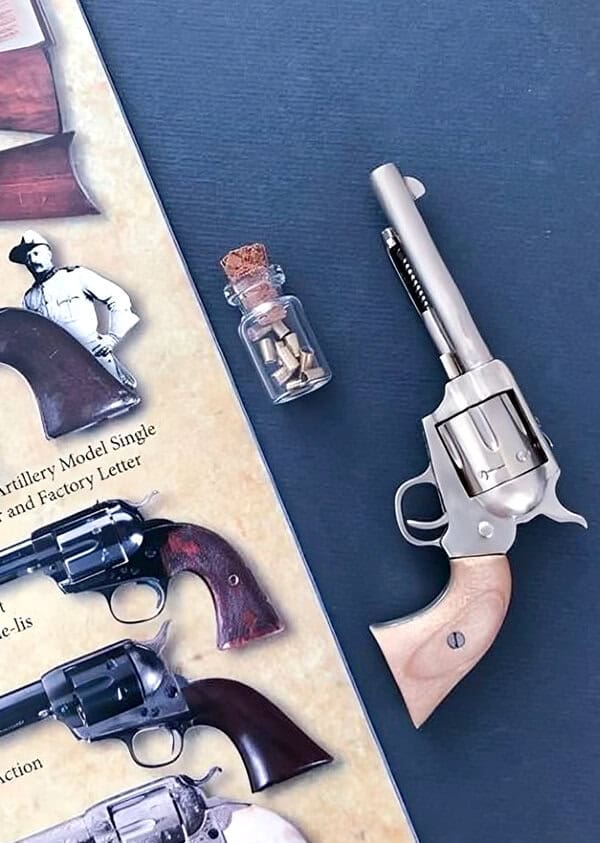
People are often surprised by the prices of miniatures, but this is usually true only for those who haven’t been interested in mini firearms before. For example, a miniaturized version of a Colt, reduced to one-third of its original size, can cost $3,500 or even more. Many people react by saying, “Why is it so expensive? Even the real one is cheaper!” However, this is similar to looking at a marble statue in the Louvre and asking, “Why should I travel to Paris when there’s a similar stone statue in our local park?”
Every product connects with its unique audience, and miniature replicas of rifles, machine guns, and pistols hold a special place for many. These charming collectibles are often gifts, with thoughtful budgets reaching several hundred dollars. Yet, another group of passionate individuals—enthusiasts, and collectors—invest significantly more in rare models. It’s fascinating to consider why they are willing to pay such high prices for these items. The answer often lies in the combination of craftsmanship, history, and uniqueness that elevates the value of these firearms. Let’s take a moment to explore the different types of miniature guns and what makes them so appealing to collectors.
Miniature Mock-Ups
It’s important to understand that while these firearms may look appealing, they are not true miniatures of real guns. Many appreciate their accessibility, as you can find a mock-up of the “Luger Parabellum” handgun for just $120. However, it’s essential to remember that these models are non-functional and merely replicate the appearance of their real counterparts.
These mock-ups are often crafted from affordable materials such as plastic, rubber, wood, and light metal alloys like brass, nickel, and zinc. They can look impressive in pictures, but you might realize you’re holding a toy upon closer inspection. It’s worth noting that while they are of higher quality than typical toys, the distinction can still be apparent. Ultimately, it’s all about appreciating the craftsmanship while understanding the limitations of these models.
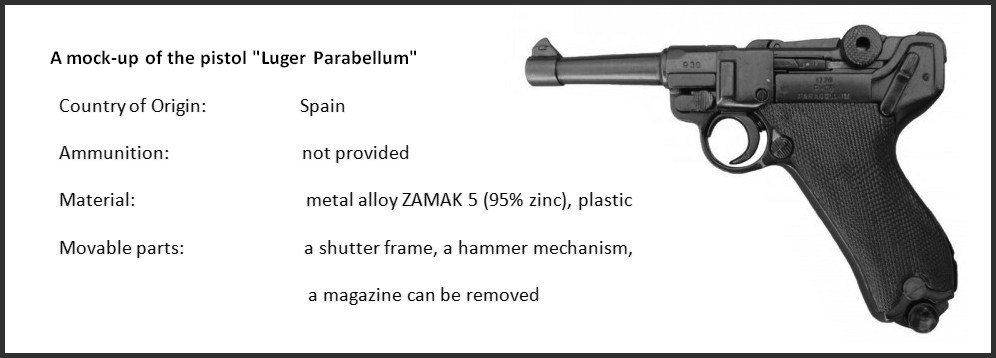
Functioning Copies of Pistols
Authentic miniature firearms hold a special place in the hearts of collectors and enthusiasts. They not only mimic the appearance of the originals but also replicate their internal mechanisms using similar materials and production techniques. These miniatures can fire blanks, rockets, and even live ammunition of the appropriate caliber, which raises an important question: How can we determine their quality?
A guiding principle is that the closer a replica is to the original, the more valuable it becomes, particularly for smaller-scale copies like those crafted in 1:4 or 1:5 ratios. However, it’s essential to recognize that these tiny models often require simplification and may only capture some intricate details of the original. This natural limit must be accepted to ensure they remain functional.
Another crucial consideration is the materials used in their construction. Ideally, a well-crafted replica would incorporate the same high-quality materials as its original counterparts, such as weapon-grade steel and wood. For those seeking something extraordinary, some replicas even feature luxurious elements like silver, gold, diamonds, ivory, and mother of pearl. This attention to detail and quality truly resonates with those who appreciate the artistry behind these remarkable miniatures.
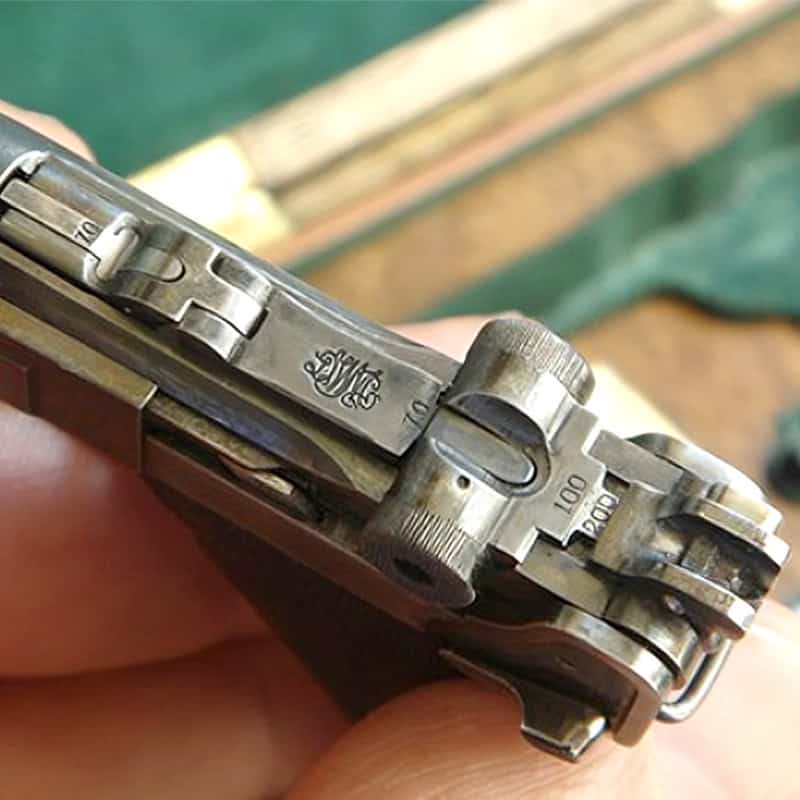
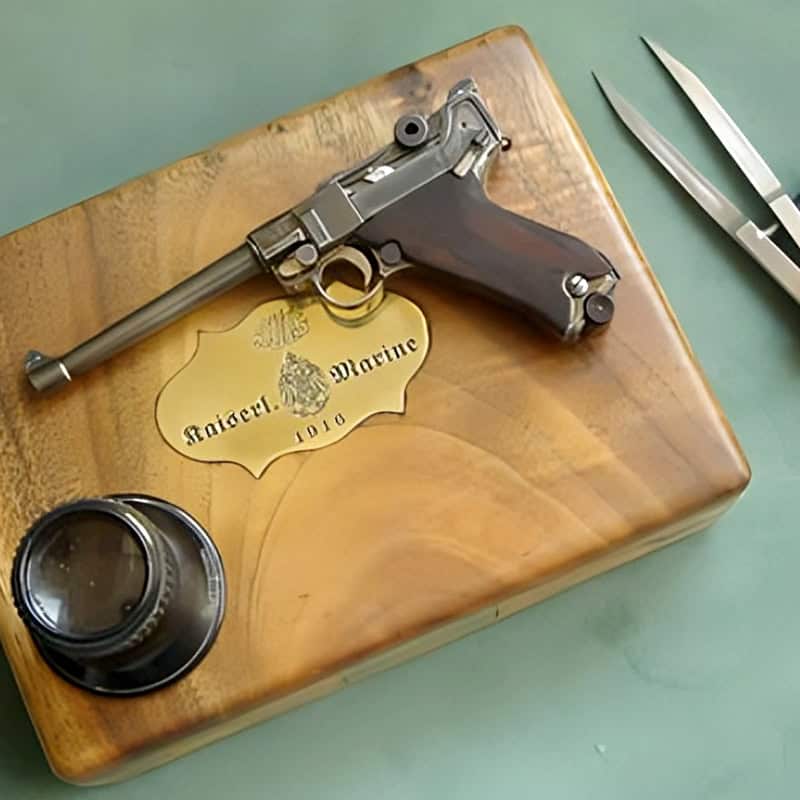
A miniature “Luger Parabellum” Pistol made by french master Michelle Lefaivre
Main Categories of Miniature Firearms Makers
The third moment – technologies. They should be as close as possible to the technologies used in the original production. Even if you reconstruct an ancient musket or a flintlock pistol. By the way, many people are interested in miniature firearms from a historical point of view, as they allow the tracking of the evolution of war tactics and technologies for centuries.
Mini firearms makers can be divided into two main categories due to the technologies they use: manufacturers and craftsmen. Manufacturers strive to automate their work to the maximum, while craftsmen work on every masterpiece manually. The first category pursues commercial purposes: they separate every project into parts, delegate tasks, and use wage labor. They offer serial products for sale that are well enough, but the variety is limited by a few standard models.
Their price is usually lower than the price of original things, made by one master from the beginning to the end with the application of manual tuning. Because the master puts much more creativity and energy into his job. Unlike serial manufacturers, such a craftsman can construct practically any variant according to individual customer’s preferences. That is why the second category masters confidently occupy their part of the market, although they have less productivity. Unique pieces come out of their hands; usually, they are custom-made. This activity is closer to the art than to handicraft or business. By the way, the works of such masters are often bought by state museums.
Finally, let’s call such a criterion an execution level: the accuracy of shapes and proportions, the quality of finishing, and adjustment. There are no trifles here. Any mechanic can carve a few details of the metal. But to polish, assemble, and adjust them so that they form the exact double of the required weapon model – this is an art that is only accessible to the chosen ones. Everyone knows the alphabet and can write, but not everyone can write poetry. That’s why there are very few masters who are capable of creating genuinely worthwhile miniature pistols for sale. They enjoy the deserved respect and fame, which only grows over the years. And so does the cost of their work.
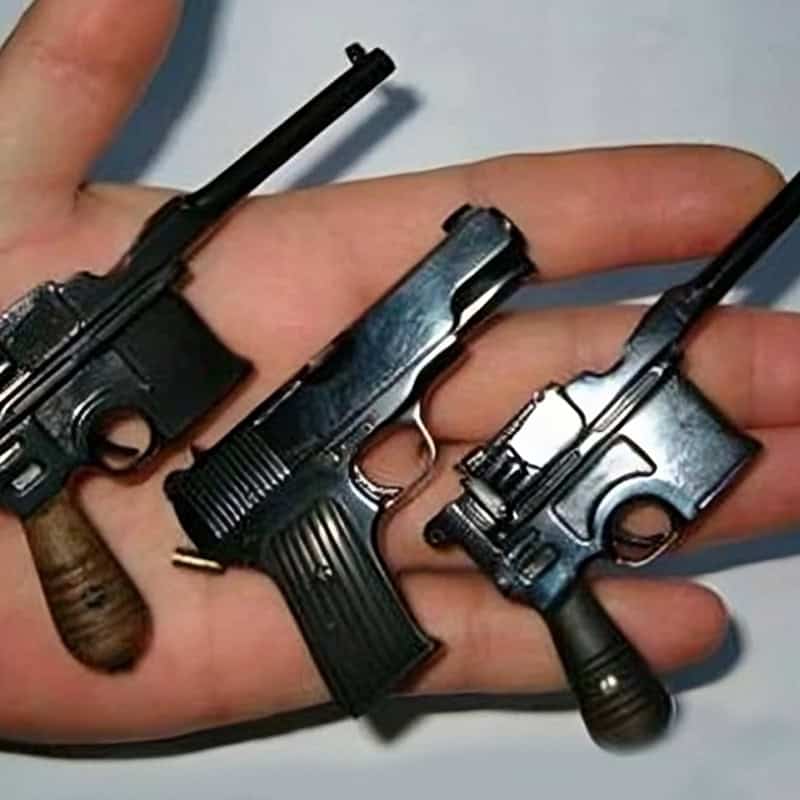
These Miniature Mausers Pistols are designed for Flaubert cartridge with 4mm caliber
What Else Affects the Price of Miniature Firearms?
As we see, even on this specific market nobody cancelled the concept of famous brand. It has remained the same. The leaders are in every market niche, including serial models and the author’s works. But the most highly valued are unique instances found nowhere else. For example, nominal samples presented to a famous person as a gift or experimental models were not repeated. Models that were withdrawn from production and have limited release are also highly ranked by collectors. For example, a small pistol, “Kolibri,” produced for sale in only one thousand copies in Austria in the 20th century, can now be bought for $3800.
And this is far beyond limitation: there are mini firearms whose price is counted by tens of thousands and even hundreds of thousands of dollars. There is the precedent with a great French master named Michelle Lefaivre, known as the best craftsman among modern world masters. His works are masterpieces, but to collectors’ regret, it is impossible to buy them. The master deals with this matter not for commercial purposes but for the soul – a rare case of pure service to art. Lefaivre does not care how many hours he spends creating a masterpiece and whether this work will pay off; he is interested in achieving the highest possible quality. You may say he is a perfectionist in the best sense. Working on one pistol often takes him a year, two years, or even more. Is there any wonder that when one day, the master agreed to sell something from his creations, he wasn’t modest in setting a price? And at the same time, by his own admission, he regretted the lost masterpiece more than rejoiced at the money.
This is a separate theme: the exclusive products of famous masters, made by hand. They are evaluated by the principle of museum exhibits – especially if they were made in the past centuries. Such a thing can’t be mixed up with anything: experienced experts guess the manner of one or the other master even without picking up the product, just by photo. The fact is that such artifacts are so complicated in production that it is practically impossible to copy them identically without having the appropriate talent and dedicating years of your life to this business. And the person who has dedicated himself to this art will most likely not produce fakes, even if they are sold well. He will be interested in glorifying his name, creating something that reflects his personality.
Moreover, sometimes, it takes more time and effort to fit someone’s well-known standards than to engage in creativity without borders. Therefore, it is much more tempting to design your model with its distinctive features, advantages, and particularity. And then you will have the right to put price tags with lump sums on your own (not someone’s) pieces of art. Even if it will take a few years for experiments and advertisement.
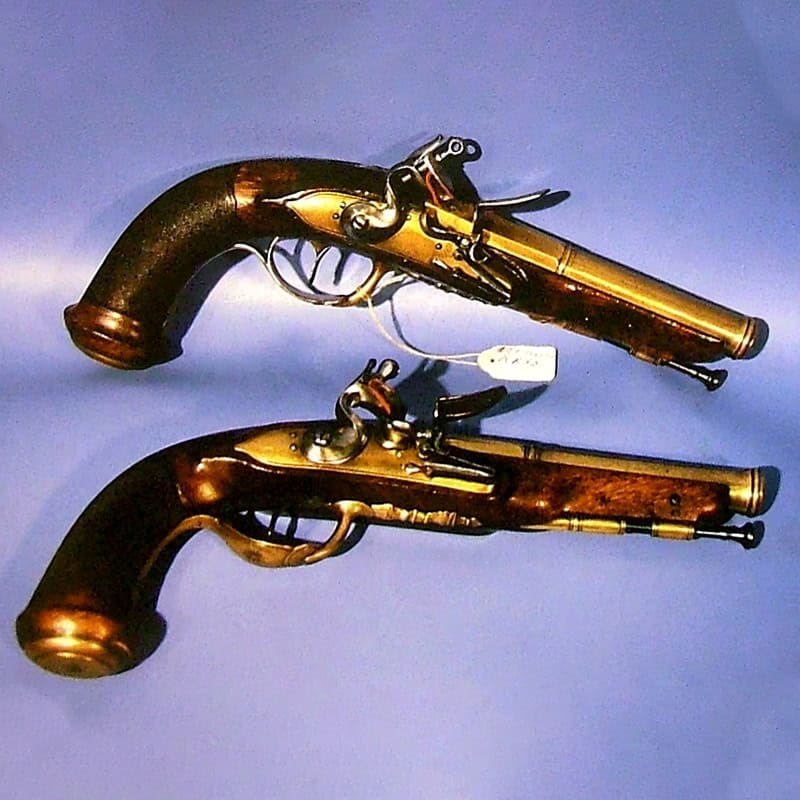
The price of ancient pistols made by famous miniature guns masters can be measured in thousands dollars
The Smaller the Scale – the Higher the Price?
Only sometimes. Such a correlation exists, but the direct dependence is different: the more complex the miniature mechanism is, the more effort and, therefore, the more work hours will be required. This determines the final price. For example, the “Colt SA” revolver, made by the famous Canadian master David Kucer, costs $3750, and Thompson’s submachine gun is already $9000. Although all other parameters are equal (including the scale of 1:3), the cost is three times higher. It is because the master will spend 200 hours on a revolver and more than 400 on a submachine gun. And this is his personal time because most tasks cannot be delegated to apprentices. It demands his trained hands, verified movements, and an experienced eye.
When discussing simpler mechanisms, we should consider the size/quality ratio. The smaller the dimensions of the working gun – providing that it retains all its properties and is made at a high level – the more a buyer is willing to pay for it. Here is an example with the Swiss miniature “SwissMiniGun”: even though this copy of the Colt Python revolver refers to serial products, its sale price starts at $6700, and the upper level can exceed $60 000. It is because no manufacturers produce miniature pistols for sale that make such a small six-charged revolver with such quality characteristics – and it is confirmed by the Guinness World Records book. But, of course, not every enthusiast can afford such an acquisition.
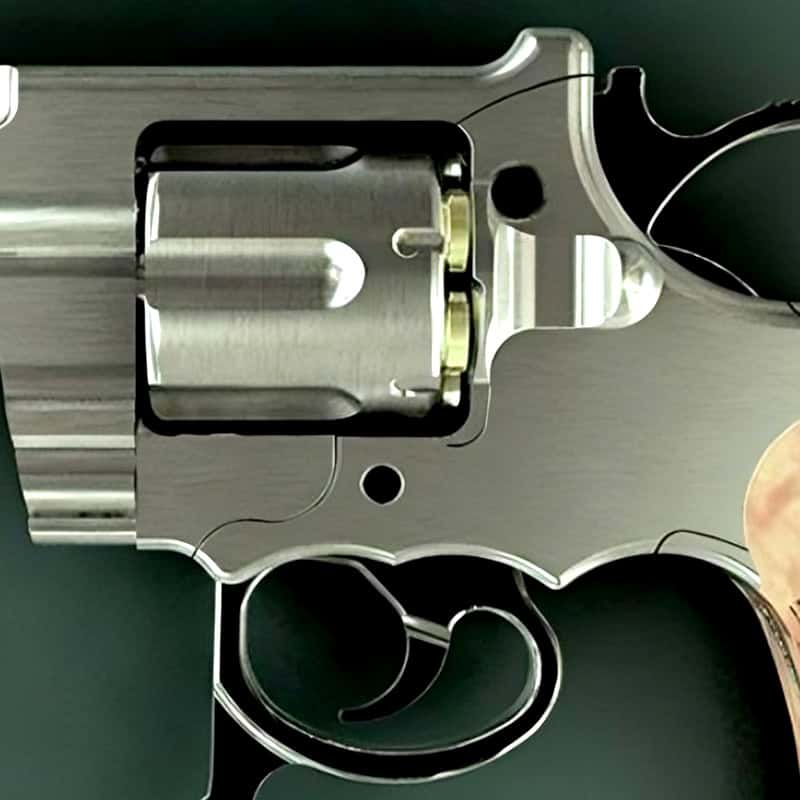
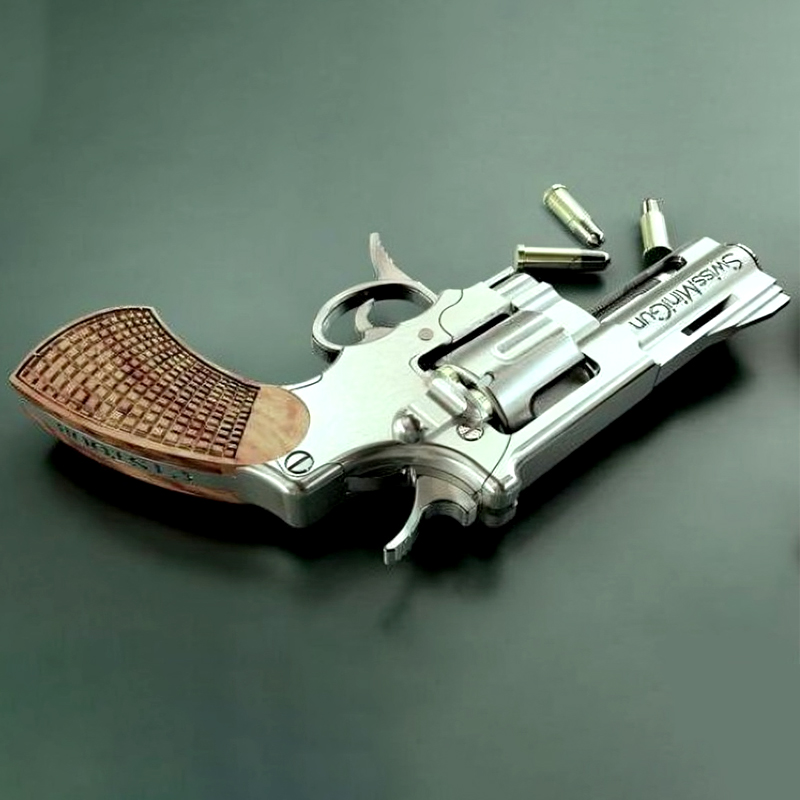
“SwissMiniGun” is one of the world’s smallest and most expensive pistols
ARE YOU LOOKING TO PURCHASE A FUNCTIONING MINIATURE PISTOL AT A REASONABLE PRICE?
You have this opportunity in our online store. We do not compete with “SwissMiniGun” in the fight for the official title of the smallest pistol in the world – it is challenging to compare “Derringer” with “Colt” because they are too different in type and internal mechanism. But if you just take the ruler and measure them, it will become obvious which one is the leader regarding miniatures.
As for functionality and quality – they are excellent. We will only mention several unique materials used in manufacturing the gun: gold and mammoth bone. Most of the parts are made of gold, even fastening screws. The only exception is steel springs, which are used in watches and are also ordered from Switzerland. The combination of professional jeweler’s and watchmaker’s skills allowed us to achieve the stunning effect for such small dimensions: the shot power is enough to pierce the metal! However, it’s better to see it once.
In W.Polah e-shop you have an exciting opportunity to acquire a stunning historical miniature weapon right now!
Golden Derringer (scale 1:6)
The miniature 1 mm caliber gold Derringer is a handcrafted model with ivory grips, made of 14 karat gold, white and rose.
It is a miniature version of the “Derringer” pistol. It is the author’s design: today any other workshop doesn’t produce working models in this size.
Про автора
Мене звати Ольга Полах, і я працюю у виробництві мініатюрної зброї з 2015 року. Я заснувала бренд мініатюрної вогнепальної зброї та з 2016 року веду Instagram-сторінку бренду. Мініатюри бренду користуються популярністю в усьому світі, маючи фанів у 25+ країнах. У 2018 році я стала єдиною власницею бренду та створила велику лінійку мініатюр. Більше 60 моделей мініатюрної зброї з різних історичних періодів було створено. У листопаді 2023 року я дала інтерв’ю Роберту Данну для журналу GunTech, де розповіла про труднощі, з якими я зіткнулася у своєму бізнесі. Також я веду інформаційний бюлетень для клієнтів бренду, який переріс у повноцінний журнал з глибокими статтями, що публікуються на wpolah.com.

Моя місія — зробити життя людей більш радісним, ділячись цікавими фактами про мініатюрну зброю та надихаючи кожного виражати себе.
